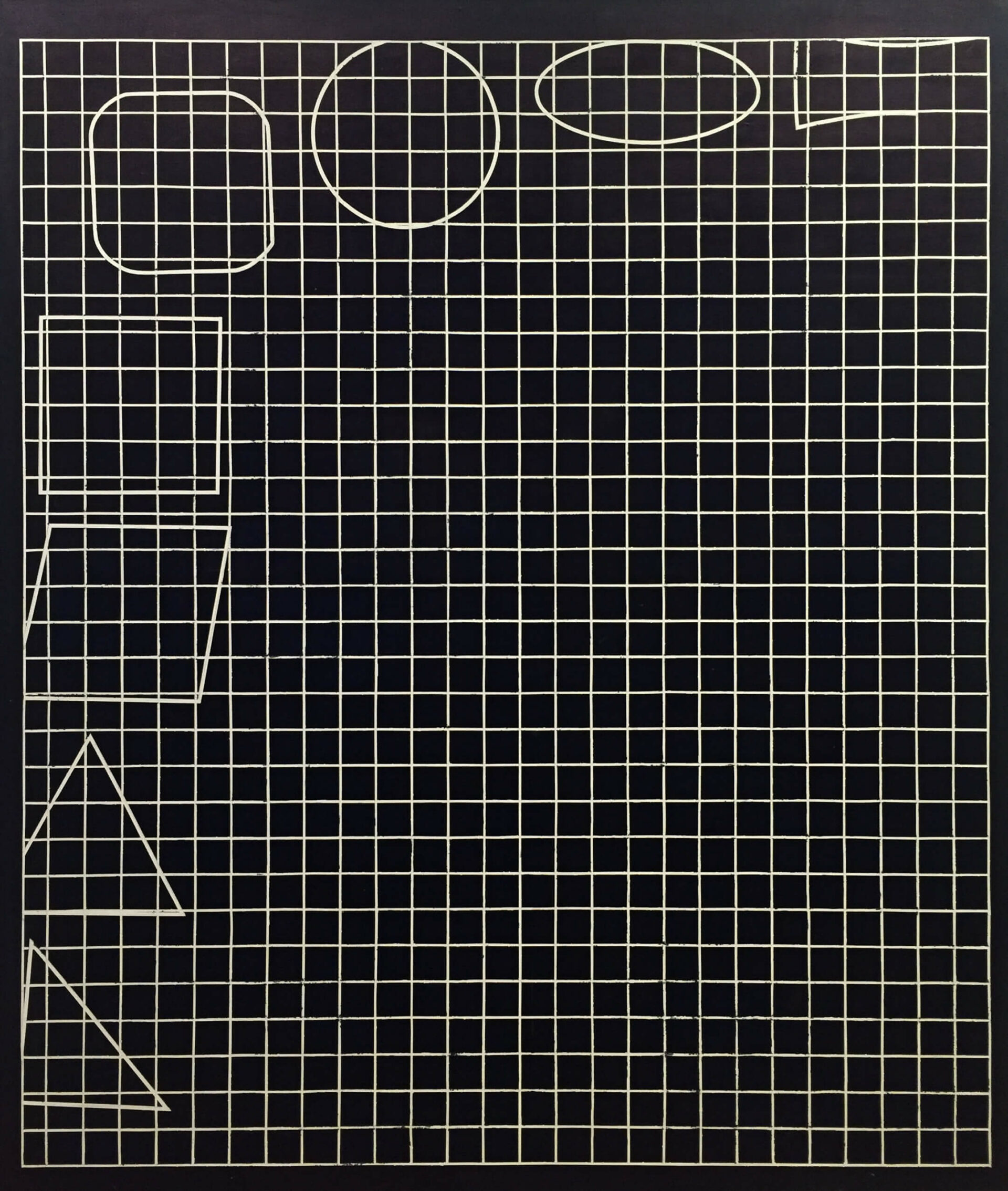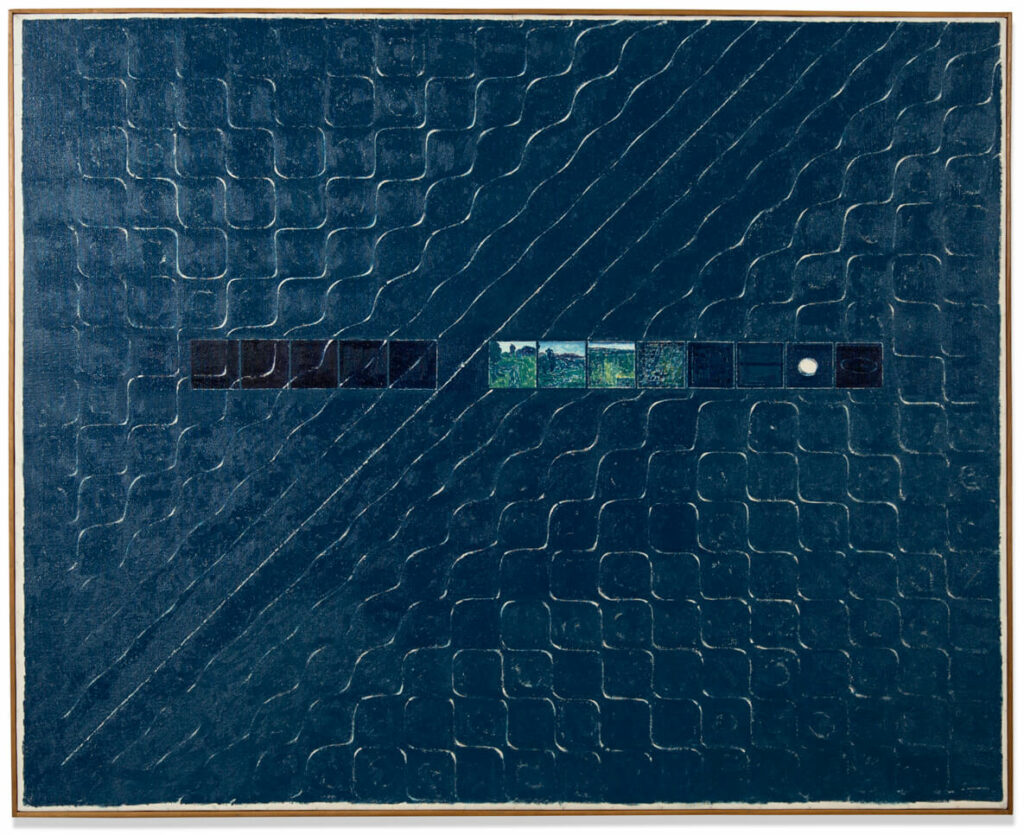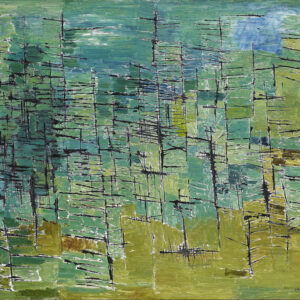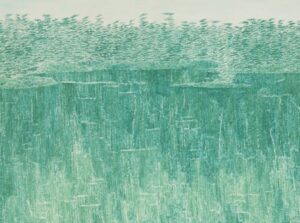Spatial Concept, Geometry 1968

Kazuo Nakamura, Spatial Concept, Geometry, 1968
Oil on linen, 127 x 106.7 cm
Christopher Cutts Gallery, Toronto
Spatial Concept, Geometry captures the philosophy of both Kazuo Nakamura’s art and science. The painting is a white grid outlined against a black background. Starting at the bottom left corner and moving along the left edge and across the top toward the right side of the painting are two-dimensional geometric shapes (some cropped) that range from triangles through squares to circles. The white grid references Nakamura’s interest in the grid as a critical device in art and science, and the geometric forms illustrate his interpretation of the history of art from the Renaissance to modern times. Painted in 1968, this iconic work hung in Nakamura’s living room for the remaining years of his life.

In 1972, an interviewer commented about Spatial Concept, Geometry: “This looks almost like a graph of the forms that western art has taken, isn’t it?” Nakamura responded: “It’s not only that but also what happened in science; How they went back to basics which were based on the forms of geometry.” He explained that the geometric shapes in their ascent represent our gradual move away from our three-dimensional, earthbound perception of the world, first defined by the Renaissance and represented by the triangle. That is followed by a rhombus, the tilted square, which is the moment of Impressionism combined with the influence of Japanese art, followed by the square referencing Cubism. Then humanity turns a corner (literally in the painting), with the octagon and the circle, which are associated with the arrival of abstract art. In science these forms mark humanity’s gradual escape from gravity, as people discovered that everything in the universe is circular. Nakamura identified the moon landing as the moment we reach the ellipse, and then our journey continues, beyond the frame, and beyond the confines of our corner of the universe.
A sister work of sorts to Spatial Concept, Geometry is Spatial Concept/Evolution, 1970, which rephrases Nakamura’s reading of the evolution of art in terms of his own personal visual progression paralleled by geometric shapes. That work is marked by a grid pattern with a diagonal running from the bottom left to the top right. The manner in which the grid is created, with its individual squares circumscribed by waves, may be Nakamura’s ingenious way of presenting the quantum wave-particle duality, the scientific parallel to the evolution of Nakamura’s own work.
Nakamura’s art has always been about the atomic world in some form or fashion, at least since the mid-1950s, and this interpretation makes sense in that context. Why the two sides would meet along the diagonal can be read as the evolution of human thought on one side meeting up or coming closer and closer to the reality it is seeking to describe. Of further note is the uncanny resemblance between the grid and its colour in Nakamura’s painting and images of the core of nuclear reactors. The bluish green hue so frequently photographed is due to the electromagnetic radiation known as Cherenkov radiation, which in the reactors is generated when a charged particle from a spent fuel rod moves through water in the cooling tanks faster than light does. Nakamura would have known about Cherenkov radiation from Scientific American, where numerous articles over the years have referenced it.

 About the Author
About the Author
 More Online Art Books
More Online Art Books
 Acknowledgements
Acknowledgements